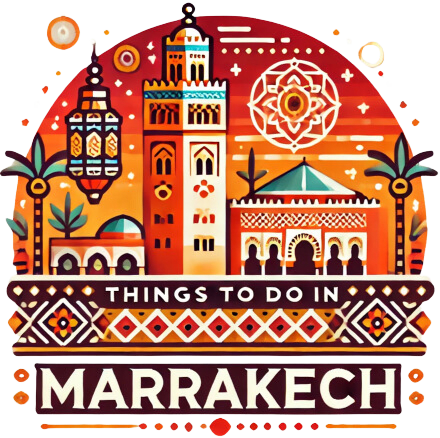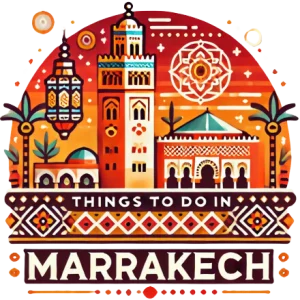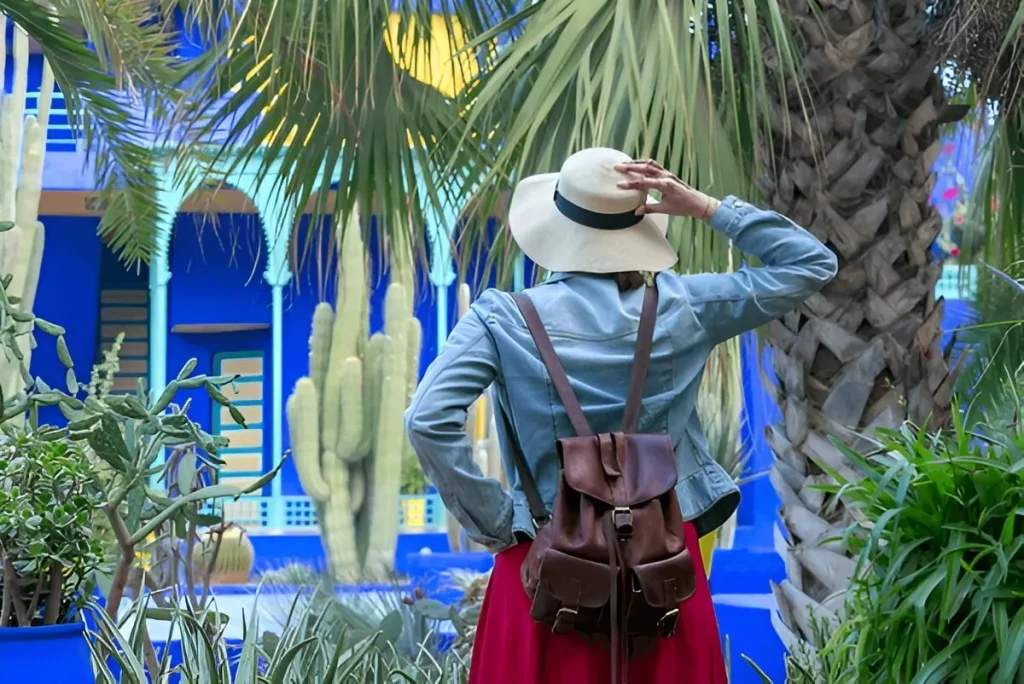Nestled in the heart of the “Red City,” Marrakech Jardin Majorelle is one of Morocco’s most cherished landmarks, celebrated for its striking cobalt blue accents, lush botanical life, and rich cultural heritage. Within the first few steps of entering, visitors are captivated by towering palms, blossoming bougainvillea, and an atmosphere that seamlessly fuses art with nature. In this comprehensive guide, you’ll discover everything you need to know about Marrakech Jardin Majorelle—from its fascinating history to practical tips for making the most of your visit. Prepare to embark on a journey through vibrant pathways, exquisite architecture, and an immersive celebration of Moroccan culture.
Table of Contents
A Brief History of Marrakech Jardin Majorelle
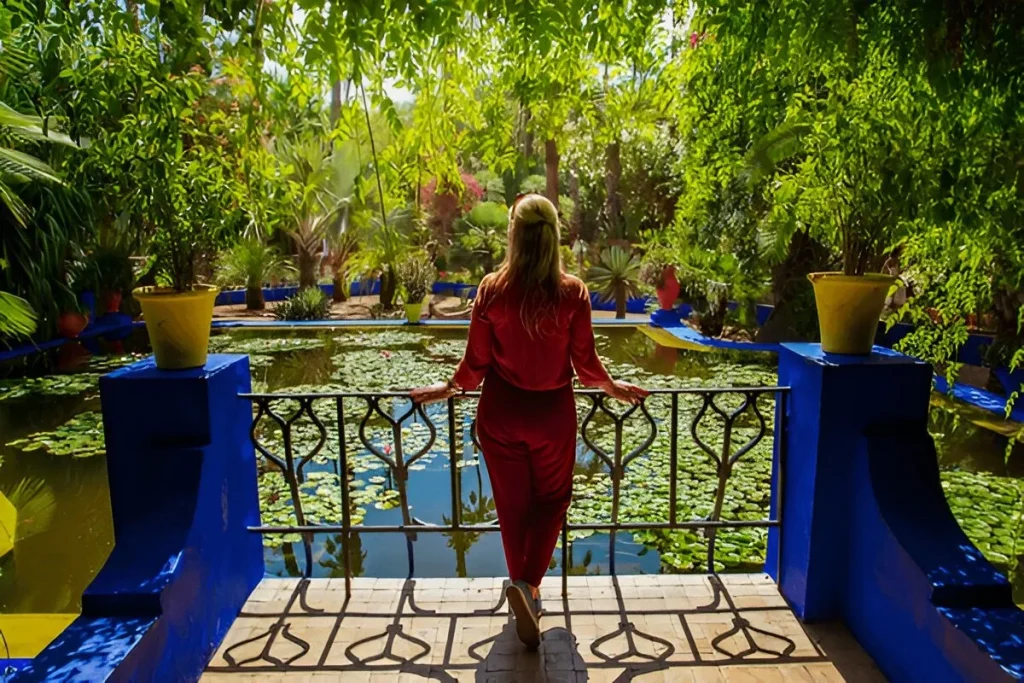
Marrakech Jardin Majorelle traces its origins back to the early 20th century. The garden was conceived by the French artist Jacques Majorelle, who arrived in Morocco in 1917, driven by a passion for Orientalist painting and an eagerness to explore the vibrant colors and culture of North Africa. After traveling across the country, Majorelle fell in love with Marrakech and decided to build his dream home and workspace in the city.
The Birth of an Artistic Haven
- Jacques Majorelle’s Vision: Majorelle purchased a plot of land outside Marrakech’s historic medina in the 1920s. Over several decades, he cultivated numerous exotic plants, trees, and cacti from around the world, transforming the plot into a living masterpiece.
- Majorelle Blue: One of the garden’s most notable features is the intense cobalt hue now known as “Majorelle Blue.” Majorelle used this color throughout the property to create a vivid contrast with the surrounding greenery.
- Decline and Revival: After Jacques Majorelle’s death in 1962, the property faced neglect. It wasn’t until the 1980s that the iconic fashion designer Yves Saint Laurent and his partner, Pierre Bergé, stepped in to restore and preserve this horticultural gem.
Today, the garden stands as both an artistic and botanical marvel, beloved by locals and international visitors alike. It offers an extraordinary glimpse into Morocco’s artistic heritage, combined with a richly diverse collection of flora.
The Allure of Jardin Majorelle’s Architecture and Design
The bold interplay between nature and art sets Marrakech Jardin Majorelle apart from other botanical spaces. Every corner of the garden exudes a delightful harmony of colors, shapes, and textures.
Vibrant Color Palette
- Majorelle Blue Dominance: Majorelle Blue is the signature color throughout the garden’s walls, fountains, and planters. This shade stands out vividly against the natural greens of the leaves, making the entire scene almost surreal.
- Contrasting Accents: Complementary hues of yellow, orange, and red accentuate details such as planters, pots, doors, and window frames, creating a joyful synergy of color.
Structural Elements
- Art Deco Influences: Jacques Majorelle was influenced by the architectural and artistic trends of the early 20th century. His villa and studios reflect hints of Art Deco styling.
- Andalusian and Moorish Inspirations: Marrakech Jardin Majorelle also integrates Moroccan architectural motifs, including Andalusian-inspired arches and traditional zellige tilework.
Through its dynamic color scheme and expertly curated design elements, Jardin Majorelle feels like a living painting—one that invites you to step inside and become part of the artwork.
Unraveling the Botanical Wonders
The garden’s plant collection is a living testament to Jacques Majorelle’s horticultural passion. He sourced specimens from five continents, carefully integrating them into a seamless tapestry of nature and design.
Exotic Flora
- Cacti and Succulents: You’ll find towering cacti species interspersed with succulents, creating a desert-like backdrop in certain sections of the garden.
- Water Lilies and Lotus Flowers: Reflective pools adorned with water lilies and lotus flowers bring a calm energy, contrasting beautifully with the more robust desert plants.
- Palm Groves and Bamboo Thickets: Majestic palms and whispering bamboo shoots line the pathways, offering visitors a cool respite from Marrakech’s heat.
Seasonal Blooms
While Marrakech Jardin Majorelle is captivating year-round, certain months bring out special blooms. Spring sees the bougainvillea explode in vibrant magenta, while summer highlights the lush palms and cacti in full splendor.
The Berber Museum: A Tribute to Morocco’s Indigenous Heritage
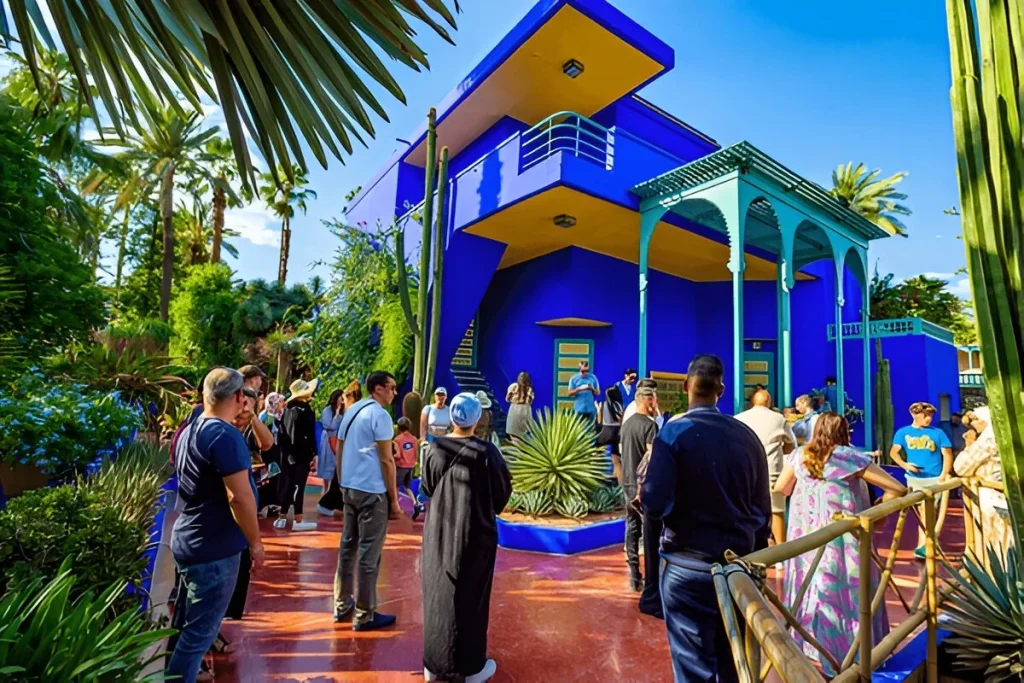
Located within the grounds of Marrakech Jardin Majorelle, the Berber Museum adds a fascinating cultural dimension to your visit. Devoted to the Berber people—Morocco’s indigenous inhabitants—the museum houses a remarkable collection of artifacts, textiles, and jewelry.
Exhibits and Highlights
- Traditional Berber Attire: A vivid display of handwoven garments and intricate silver jewelry showcases the rich artistry of the Berber communities.
- Ceramic and Pottery Work: Various earthenware pieces reveal the historic craftsmanship that is still cherished in Berber villages today.
- Cultural Narratives: Informative panels and multimedia exhibits dive into the daily life, social structures, and traditions of Berber culture across Morocco’s diverse regions.
Importance of Berber Heritage
Recognizing the Berber people’s contributions to Morocco’s cultural mosaic is essential. By housing these artifacts and stories, Marrakech Jardin Majorelle honors the depth and breadth of Morocco’s indigenous legacy.
Yves Saint Laurent’s Lasting Legacy
When Yves Saint Laurent and his partner, Pierre Bergé, purchased the property in 1980, they rescued it from potential demolition. Their commitment to preserving Marrakech Jardin Majorelle extended beyond mere financial investment; it was a labor of love.
Fashion Meets Culture
- Inspiration for Collections: The garden’s brilliant colors and Moroccan motifs often influenced Yves Saint Laurent’s fashion designs.
- Cultural Patronage: Yves Saint Laurent’s presence in Marrakech contributed to the city’s rising profile as a cultural and artistic hub.
Just a short walk from Jardin Majorelle is the Yves Saint Laurent Museum, opened in 2017 to celebrate the legendary designer’s connection to Marrakech. Visitors can learn about his iconic designs, see rotating exhibits, and admire the building’s modern architecture—a fitting tribute to Saint Laurent’s creative genius.
Practical Tips for Visiting Jardin Majorelle
Planning ahead ensures you make the most of your trip to Marrakech Jardin Majorelle. Below are some insider tips:
- Timing: Arrive early in the morning (around 8 AM) to beat the crowds, especially during peak tourist seasons like spring and autumn.
- Tickets: Consider purchasing tickets online in advance to skip the often lengthy queues.
- Dress Comfortably: Wear light, breathable clothing and comfortable shoes. A hat and sunscreen are recommended, given Marrakech’s sunny climate.
- Photography: The garden is a photographer’s dream. However, be respectful of other visitors and avoid blocking pathways while capturing your shots.
- Guided Tours: A guided tour can provide valuable insights into the garden’s history, architecture, and flora.
- Accessibility: While much of the garden is accessible to wheelchair users, some pathways may be narrow or uneven.
Nearby Attractions to Enhance Your Marrakech Experience
Marrakech offers an abundance of vibrant sights and experiences beyond Jardin Majorelle. To fully immerse yourself in the city’s dynamic culture, consider adding the following attractions to your itinerary:
- Koutoubia Mosque: The largest mosque in Marrakech, known for its impressive 77-meter-tall minaret.
- Jemaa el-Fnaa: The city’s main square and a UNESCO World Heritage site, bustling with food stalls, snake charmers, and storytellers.
- Bahia Palace: A 19th-century palace showcasing intricate tilework, carved wood ceilings, and tranquil courtyards.
- Saadian Tombs: A hidden necropolis dating back to the 16th century, rediscovered in 1917.
Including these iconic sights ensures that you gain a well-rounded perspective of Marrakech’s rich history and cultural tapestry.
Culinary Delights and Local Eateries
No trip to Marrakech is complete without indulging in its mouthwatering cuisine. After a leisurely stroll through Marrakech Jardin Majorelle, treat yourself to the local flavors at nearby cafés and restaurants:
Traditional Moroccan Dishes
- Tagine: A slow-cooked stew typically made with chicken, lamb, or vegetables, flavored with an array of Moroccan spices.
- Couscous: Morocco’s national dish, often served with flavorful broth, vegetables, and meat.
- Harira: A hearty soup made with lentils, chickpeas, tomatoes, and aromatic herbs, commonly enjoyed during Ramadan.
Recommended Spots Near Jardin Majorelle
- Café Majorelle: Located inside the garden, this café offers light meals, fresh juices, and a stunning view of the vibrant surroundings.
- Local Street Vendors: For a more immersive experience, venture slightly further to sample freshly squeezed orange juice or traditional Moroccan pastries like msemen or baghrir.
Exploring Morocco’s culinary scene is as essential to understanding local culture as visiting its historical sites. Each dish tells a story of tradition, family, and community.
Shopping for Moroccan Handicrafts and Souvenirs
The area around Marrakech Jardin Majorelle is home to several boutiques and artisan shops where you can find quality handicrafts that reflect Moroccan heritage:
- Leather Goods: Handcrafted bags, slippers, and wallets are popular souvenirs.
- Rugs and Carpets: Berber rugs are admired worldwide for their intricate designs and craftsmanship.
- Metalwork and Lanterns: Delicate filigree lanterns and brass trays showcase the artistic talent of local metalworkers.
- Ceramics and Pottery: Vibrant ceramics, from plates to tajine pots, bring a pop of Moroccan color into your home.
When shopping, don’t be afraid to haggle—but do so respectfully and with a friendly demeanor. Haggling is part of Morocco’s cultural tradition, and many shop owners appreciate a bit of banter.
Engaging Cultural Experiences in Marrakech
Beyond admiring art and architecture, immerse yourself in the local lifestyle and traditions:
- Hammam Experience: Indulge in a traditional Moroccan spa treatment at a local hammam.
- Cooking Classes: Learn how to prepare classic Moroccan dishes, from mixing spices for a tagine to baking the perfect bread.
- Henna Art: Get a temporary henna tattoo from skilled artisans who create intricate designs.
- Folk Music and Dance: Seek out live performances featuring gnawa music or traditional Moroccan dance.
Each cultural excursion provides deeper insight into the country’s customs and ways of life, broadening your understanding of Marrakech as a whole.
Sustainable Tourism at Marrakech Jardin Majorelle
With the surge in global travel, sustainable tourism practices have never been more crucial. Marrakech Jardin Majorelle actively participates in conservation efforts and environmental education:
- Water Conservation: The garden employs drip irrigation systems and water-saving techniques.
- Local Community Support: Many of the staff and gardeners are sourced locally, fostering community development and job opportunities.
- Plant Preservation: Rare and endangered plant species are carefully nurtured within the garden’s protective environment.
As a visitor, you can contribute by respecting the grounds, minimizing plastic waste, and purchasing souvenirs from local artisans who rely on sustainable and ethical production methods.
Planning the Perfect Moroccan Itinerary
To truly appreciate Marrakech Jardin Majorelle and the myriad delights of Morocco, consider creating an itinerary that balances cultural immersion, natural exploration, and relaxation:
- Marrakech (2–3 days)
- Day 1: Explore Jemaa el-Fnaa, Koutoubia Mosque, and the medina.
- Day 2: Visit Marrakech Jardin Majorelle early in the morning, then head to the Bahia Palace.
- Day 3: Attend a cooking class or hammam session, followed by an evening stroll through the medina’s souks.
- Essaouira (2 days): Wander through the coastal fortress, enjoy fresh seafood, and partake in water sports like windsurfing or kiteboarding.
- Atlas Mountains (2 days): Trek through scenic villages, admire the stunning vistas, and experience Berber hospitality firsthand.
- Desert Excursion (2–3 days): Venture to the Sahara for an overnight camp among the dunes, complete with camel rides and mesmerizing star-gazing.
Whether you have a week or a month, Morocco’s diverse landscapes and rich cultural tapestry ensure that every day offers something unforgettable.
Insider Tips for a Memorable Visit
- Embrace Local Etiquette: Greet with a friendly “Salam alaikum” and dress modestly when exploring more conservative areas.
- Keep Small Change: Local vendors and taxi drivers often don’t have change for larger bills.
- Stay Hydrated: Carry a reusable water bottle to stay refreshed.
- Bargain Tactfully: When shopping, do your research on approximate prices so you can negotiate confidently.
- Explore On Foot: Walking is the best way to discover Marrakech’s hidden gems, from tucked-away courtyards to captivating street art.
Internal and External Links
- Internal Link: For more ideas on exploring Morocco’s hidden treasures, check out our
Comprehensive Guide to Unforgettable Moroccan Road Trips. - External Link: Learn more about official travel regulations and updates at
VisitMorocco.com.
Conclusion: Embrace the Magic of Marrakech Jardin Majorelle
In a city revered for its lively souks, historical monuments, and vibrant street life, Marrakech Jardin Majorelle stands as a serene haven that every traveler should experience at least once. Its winding pathways, adorned with exotic plants and set against a backdrop of Majorelle Blue, offer a rare blend of tranquility and visual excitement. Add to this the cultural significance of the Berber Museum and Yves Saint Laurent’s enduring legacy, and you have a destination that truly encapsulates the essence of Morocco—a harmonious confluence of art, nature, and heritage.
Whether you’re an avid gardener, an art enthusiast, or simply someone who appreciates the beauty of well-curated spaces, a visit to Marrakech Jardin Majorelle will leave you inspired and enriched. As you exit through the cobalt gates, take a moment to reflect on the colors, scents, and sounds that have enveloped you. The garden’s charm extends far beyond its walls; it lingers in your memory, urging you to return to the Red City’s vibrant heart, where history, culture, and innovation converge in the most enchanting ways.
Ready to discover more? Plan your trip to Marrakech Jardin Majorelle now, and immerse yourself in this vivid oasis of color, creativity, and culture.
Call to Action: Embark on your Moroccan adventure and explore the magic of Marrakech Jardin Majorelle today. Book your tickets, pack your bags, and get ready to create memories that will last a lifetime!
WHAT IS THE BEST TIME OF DAY TO VISIT MARRAKECH JARDIN MAJORELLE?
Early morning, around 8 AM, is ideal to beat the crowds and enjoy cooler temperatures. Arriving right at opening time also provides excellent lighting for photography.
HOW CAN I PURCHASE TICKETS FOR JARDIN MAJORELLE?
You can buy tickets at the entrance or online through the official website. Purchasing in advance is recommended during peak seasons to skip the long queues.
ARE PHOTOGRAPHY AND VIDEOGRAPHY ALLOWED INSIDE THE GARDEN?
Yes, personal photography and videography are allowed. However, be mindful of other visitors and avoid blocking pathways or causing disruptions while capturing your shots.
HOW LONG SHOULD I PLAN TO SPEND AT MARRAKECH JARDIN MAJORELLE?
Most visitors spend around one to two hours exploring the garden, museum, and café. If you’re an avid photography enthusiast or plan to visit the Yves Saint Laurent Museum, allocate extra time.
WHAT OTHER ATTRACTIONS ARE NEAR MARRAKECH JARDIN MAJORELLE?
Koutoubia Mosque, Jemaa el-Fnaa, the Bahia Palace, and the Yves Saint Laurent Museum are all within easy reach. Consider exploring these for a well-rounded Marrakech experience.
